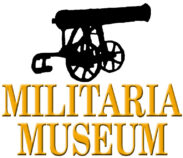From the popular British perspective we typically think of the Crimean War as essentially being a conflict between Great Britain, (with a little help from the French), and Imperial Russia, from 1854 to 1856 and entailing three dramatic battles fought-out within the Crimean Peninsula, (Alma, Balaklava and Inkerman), culminating in the long and gruelling, climactic siege of Sevastopol. However, in reality the war actually took place on land and at sea, over at least seven modern-day countries and three main seas over 4,000 miles apart, and consisted of over fifty actions and directly involved at least six different combatant nations.
On the Allied side, the French made-up the largest military contingent with 309,000 men and took by far the most casualties – 135,500, followed by the Ottoman Empire with 236,000 and 45,000 casualties. Great Britain was much the smaller force with just 108,00 men and suffering 40,500 casualties, followed by Sardinia/Piedmont who added 2,200 men; (around 230,000 casualties altogether). The Russian Empire suffered much the greatest, however, with double the allied casualties at more than 450,000.
It was the first ‘modern war’ – a thoroughly transitional conflict that in the space of just three years, turned from Napoleonic glory and splendor into pseudo-World War 1 squalor and industrial destruction; from splendid rows of Guards advancing in red tunics and busbies, sporting bands and flamboyant colours amidst musket and cannon fire at Alma River, to Sevastopol’s wretched, drab utilitarian winter campaign gear, fought in trenches using guerilla tactics with murderous long range rifles and explosive shells; and from the glorious wooden three-decker ships of the line, to steam-powered ironclad gun platforms. This unforeseen debacle would be critically observed as a ‘rehearsal’ for the apocalyptic American Civil War, soon to follow.
Below is a list of the most significant recorded actions across all theaters and amongst all combatants from its start in 1853 to the Treaty of Paris, 1856.
